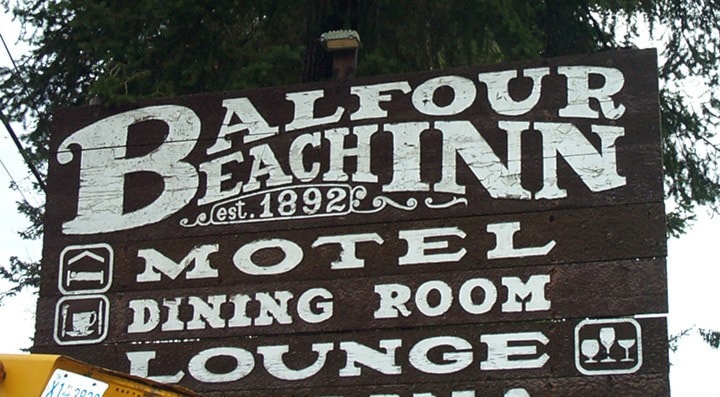Tenth in a series on West Kootenay-Boundary place names
Balfour, at the outlet of Kootenay Lake, was named in 1890 by surveyor Charles Westly Busk (1852-1933), who staked a pre-emption claim there a year prior.
The earliest reference to the townsite was in Revelstoke’s Kootenay Star on August 2 that year: “Another town has been started on Kootenay Lake at Busk’s Point and lots are for sale.” (When Busk surveyed the townsite in May 1891, he immodestly named three streets Charles, Westly, and Busk — Charles and Busk are still on the map.)
The first actual mention of Balfour was in the Nelson Miner of September 13, 1890: “No better view of Kootenay Lake and river (or outlet) can be had than at Busk’s point ... This available piece of ground has been platted for a townsite and given the name of Balfour, in honor of the man who rules Ireland through a secretaryship in Lord Salisbury’s cabinet.”
Although this conclusively establishes the town was named for Arthur James Balfour (1848-1930), who served as prime minister of Great Britain from 1902-05 (and therefore the pronounciation is BAL-fir, not Bal-FORE), it didn’t prevent several rival theories from emerging.
In 1895, during a visit to the area, Lady Aberdeen wrote in her diary: “Opposite Pilot Bay a gentleman of the name of Balfour has built a private residence just because of the beauty of the place. And he is fully justified.”
A copy of the 1892 West Kootenay tax roll held by the Kootenay Lake archives shows a D.B. Balfour did own property at the outlet, which he abandoned three years later.
A Cominco Magazine feature of April 1963 further muddied the waters by stating Balfour was either named for Lord Balfour, “or for John Hutton Balfour, a botanist.”
In 1969, G.P.V. and Helen Akrigg received a letter from Nelson’s librarian, Mrs. G.M. Stockell, who stated: “It is not named after the British Lord Balfour, but after a man who worked on the CPR.” In their book, British Columbia Place Names, the Akriggs added “Mr. Balfour was superintendent of bridges during construction of the CPR’s Crowsnest line.”
Perhaps the two men were related, for in Kootenay Outlet Reflections, historian Michael Cone states Lord Balfour’s family “had interests in mining claims in the area.”
The Balfour post office opened on July 1, 1891. According to the Nelson Tribune of October 12, 1893, it was threatened with closure when postmaster Busk planned to winter in Victoria, but evidently some arrangement was made to keep it going.
The BC Geographic Names system says the post office closed on February 12, 1955 and re-opened sometime in 1956. However, postal authorities later claimed it hadn’t actually closed, just been shut “for an extended period of time” during a move.
Balfour has subsumed two suburbs, Fraser’s Landing and Riverside, each of which will be dealt with separately in this series.
Anthropologist Verne Ray recorded a Sinixt name, ktca’ukul, for a spring village at or near Balfour, which he translated as “spliced trousers.”
Previous installments in this series
